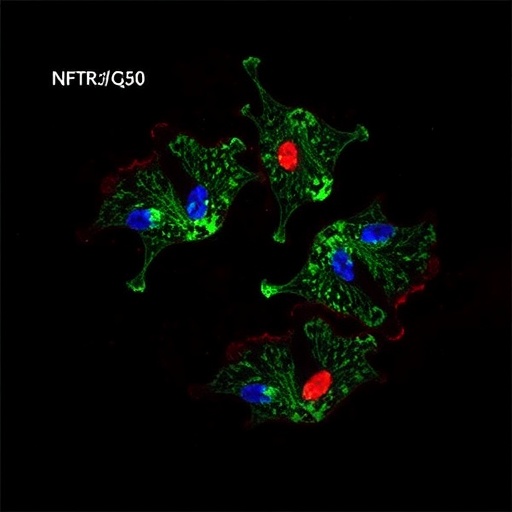Lutetium-177-PSMA-617 (Pluvicto®) has emerged as a groundbreaking radiolabeled therapeutic agent in the battle against advanced prostate cancer, specifically targeting metastatic castration-resistant cases that express prostate-specific membrane antigen (PSMA). As the first of its kind, Pluvicto® has offered fresh hope for patients grappling with this aggressive disease variant. Despite its promise, the global utilization of this drug remains somewhat limited, fueling a pressing need for comprehensive safety profiling to facilitate wider and more informed clinical application. A recent study has undertaken this challenge by mining the FDA’s Adverse Event Reporting System (FAERS) to delineate the spectrum and characteristics of adverse events (AEs) linked to Pluvicto®.
This pioneering research meticulously sifted through safety reports submitted between April 1, 2022, and December 31, 2024, encapsulating a sizable cohort of 7,654 patients primarily identified as having been treated with Pluvicto®. The temporal distribution of these reports conspicuously indicated a monthly uptrend in AE reporting frequency, signaling an escalating clinical adoption that is paralleled by a growing pharmacovigilance dataset. Demographically, the analysis highlighted a noteworthy subset of patients weighing 90 kilograms or more, corresponding to nearly one-quarter of the cases, underscoring the necessity of weight-based considerations in therapeutic management.
To unravel the complex interface between Pluvicto® administration and patient safety, researchers classified the reported adverse events according to the Medical Dictionary for Regulatory Activities (MedDRA®), enabling a standardized taxonomy based on System Organ Classes (SOCs) and preferred terms (PTs). Out of an initial pool of 649 distinct PTs, 33 statistically significant signals were robustly identified through the convergence of four independent pharmacovigilance algorithms: Reporting Odds Ratio (ROR), Proportional Reporting Ratio (PRR), Bayesian Confidence Propagation Neural Network (BCPNN), and Multi-item Gamma Poisson Shrinker (MGPS). These signals spanned across 10 SOC categories, with 15 AE signals demonstrating a compelling correlation to the pharmacologic action of Lutetium-177-PSMA-617.
A key insight from the temporal analysis of adverse events was the observation that most AEs manifested within the first three months following treatment initiation, illuminating a critical window for clinical vigilance. Among different organ systems, nervous system disorders were distinctive for their rapid onset, often surfacing within the first 10 days post-administration. This early-onset pattern accentuates the need for heightened neurologic monitoring immediately after treatment, as early detection and intervention could mitigate long-term complications.
Beyond the well-characterized hematologic toxicities traditionally associated with radioligand therapies, the study uncovered consistent high-signal AEs including xerostomia (dry mouth), abnormalities in laboratory tests, and general physical health deterioration. These findings resonate with prior clinical observations but now gain quantitative backing from a comprehensive real-world data environment, reinforcing the multifaceted impact of Pluvicto® on patient health beyond tumor control.
Particular attention is warranted for patients exceeding the 90 kg weight threshold, where the incidence and significance of AEs appeared amplified. This weight-related vulnerability suggests that individualized dosing strategies or enhanced supportive measures may be required to optimize safety profiles for heavier patients. With the increasing global rollout of Pluvicto®, integrating such nuanced clinical insights is paramount to tailoring therapy and mitigating risks.
The rigorous application of disproportionality analysis techniques in this study exemplifies how modern pharmacovigilance leverages large-scale spontaneous reporting systems to generate clinically actionable intelligence. By cross-validating AE signals through multiple statistical algorithms, the research delivers a high degree of confidence in the detected associations, thereby paving the way for improved safety guidelines and patient monitoring protocols.
Moreover, the temporal profiling adds an invaluable dimension to understanding the kinetics of adverse reactions. The identification of distinct early-onset versus delayed-onset toxicities provides clinicians with a temporal roadmap for surveillance and intervention, facilitating proactive patient management rather than reactive treatment of complications.
The study also highlights the indispensable role of laboratory assessments — intensified and diversified screening could preemptively flag subclinical toxicities, allowing timely adjustment of therapy or supportive care. This aligns with modern precision medicine paradigms, where dynamic monitoring underpins safe and effective oncologic treatments.
In conclusion, this robust disproportionality analysis of the FDA’s FAERS database reaffirms the known safety signals linked with Lutetium-177-PSMA-617 while unveiling novel considerations for clinical practice. It advocates for heightened awareness of early neurologic symptoms, comprehensive laboratory screening, and the incorporation of patient-specific characteristics such as body weight into therapeutic decision-making. As Pluvicto® continues to redefine treatment landscapes for advanced prostate cancer, such real-world evidence studies are critical to safeguarding patient outcomes and optimizing the clinical benefit-risk balance.
This investigation offers a template for future pharmacovigilance in oncology, demonstrating how large data repositories and sophisticated analytic frameworks collaboratively enhance drug safety knowledge. Ultimately, these insights bolster clinicians’ capacity to harness the therapeutic potential of novel agents like Pluvicto®, while vigilantly managing their adverse effect profiles in diverse patient populations.
Subject of Research: Adverse events related to Lutetium-177-PSMA-617 (Pluvicto®) in the treatment of metastatic castration-resistant prostate cancer, using data from the FDA’s Adverse Event Reporting System.
Article Title: Adverse events associated with Lutetium-177-PSMA-617 (Pluvicto®) in advanced prostate cancer: a disproportionality analysis based on the FDA’s adverse event reporting system (FAERS).
Article References: Jin, Y., Zhang, Y., Wang, M. et al. Adverse events associated with Lutetium-177-PSMA-617 (Pluvicto®) in advanced prostate cancer: a disproportionality analysis based on the FDA’s adverse event reporting system (FAERS). BMC Cancer 25, 1470 (2025). https://doi.org/10.1186/s12885-025-14846-x
Image Credits: Scienmag.com
DOI: https://doi.org/10.1186/s12885-025-14846-x
Tags: adverse event reporting trendsclinical adoption of radiolabeled therapiescomprehensive safety evaluationFDA Adverse Event Reporting SystemLutetium-177-PSMA-617 adverse eventsmetastatic castration-resistant prostate cancerpatient cohort analysispharmacovigilance in oncologyPluvicto safety profilingprostate cancer treatmentprostate-specific membrane antigen targetingweight-based therapeutic management





